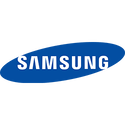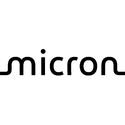
Samsung Aims for 1,000-Layer NAND by 2030, Begins Wafer Bonding at 400 Layers
Samsung aims to create 1,000-layer NAND by 2030 relying on its new "multi-BV" NAND design. The Bell reports that this plan involves stacking four wafers to overcome structural limits. Wafer bonding technology plays a crucial role in this progress and Samsung intends to use it to break the 1,000-layer barrier. Samsung Electronics DS division CTO, Song Jae-hyuk, pointed out that wafer bonding allows separate production of peripheral and cell wafers before joining them into one semiconductor. The Bell says this technology will likely appear first in Samsung's 10th-gen NAND (V10), while industry experts think a single wafer can hold about 500 NAND layers when implementing only cell structures. In the past, Samsung has used the COP (Cell on Peripheral) technique, a method that places the peripheral circuit on one wafer, with NAND cells stacked on top. However, as NAND layers grow, the lower peripheral parts face more pressure potentially affecting reliability.
Samsung's plan involves working with China's YMTC, which should offer a hybrid bonding patent for V10 NAND. ZDNet reports that the South Korean tech company will start making its V10 NAND in large quantities in the second half of 2025, with about 420-430 layers. Besides wafer bonding, Samsung adds other technologies to its NAND plan. The Bell points out that cold etching using molybdenum, and other new ideas will start with 400-layer NAND and play a key part in growing to 1,000 layers. Samsung isn't alone in trying to create ultra-high-layer NAND products. Japan's Kioxia also wants to reach this goal through its "multi-stack CBA" (CMOS Bonded to Array) technology. The company's plan is even bolder hoping to sell 1,000-layer 3D NAND by 2027.
Samsung's plan involves working with China's YMTC, which should offer a hybrid bonding patent for V10 NAND. ZDNet reports that the South Korean tech company will start making its V10 NAND in large quantities in the second half of 2025, with about 420-430 layers. Besides wafer bonding, Samsung adds other technologies to its NAND plan. The Bell points out that cold etching using molybdenum, and other new ideas will start with 400-layer NAND and play a key part in growing to 1,000 layers. Samsung isn't alone in trying to create ultra-high-layer NAND products. Japan's Kioxia also wants to reach this goal through its "multi-stack CBA" (CMOS Bonded to Array) technology. The company's plan is even bolder hoping to sell 1,000-layer 3D NAND by 2027.








































